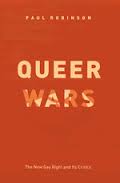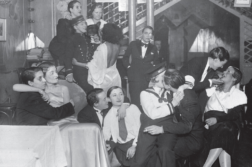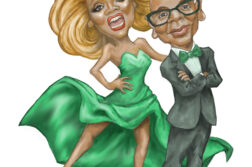Published in: September-October 2005 issue.
 Queer Wars: The New Gay Rights and its Critics
Queer Wars: The New Gay Rights and its Critics
by Paul Robinson
University of Chicago Press. 192 pages, $25.
PAUL ROBINSON states at the beginning of Queer Wars that “the emergence of gay conservatism as a political and intellectual force is arguably the most important new development in the gay world.” It’s an ambitious claim, and one that would be hard to sustain with reference to today’s political organizations. Indeed it’s seriously debatable whether gay conservatism constitutes a political force at all. The largest gay conservative group, the Log Cabin Republicans, could scarcely be described as a political force in its own party.






